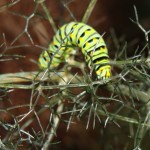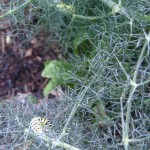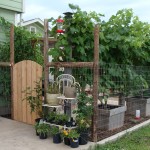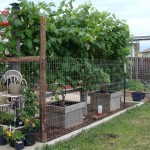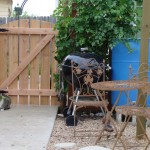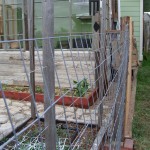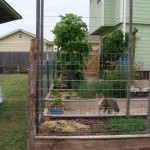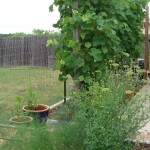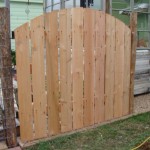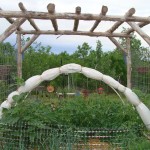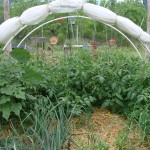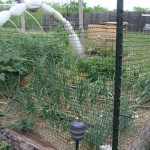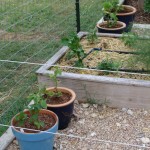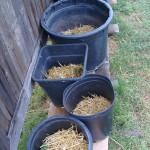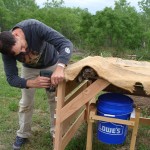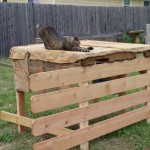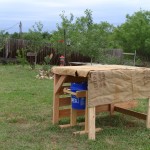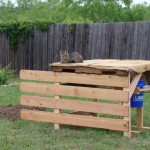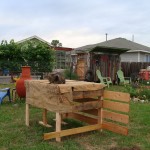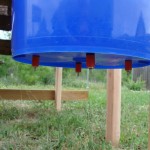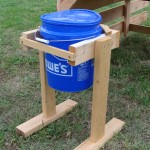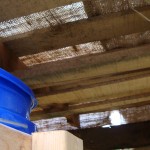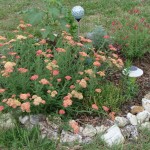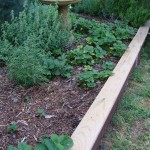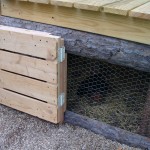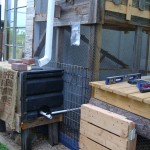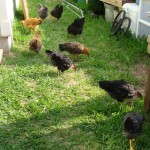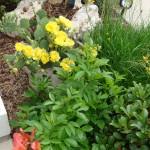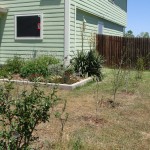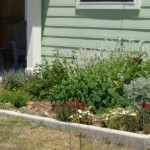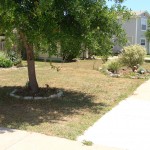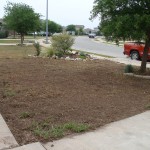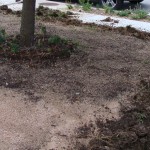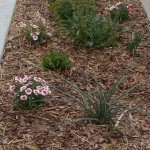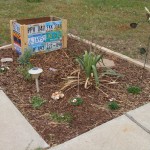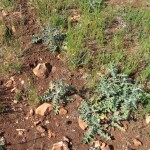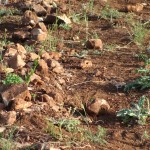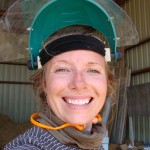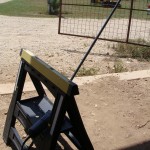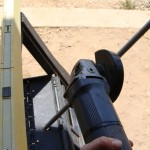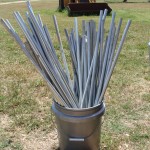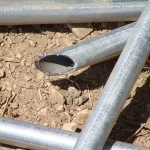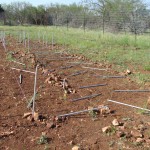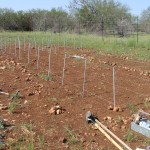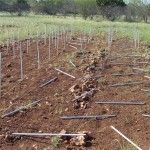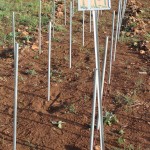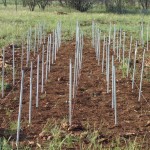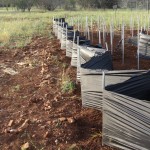May Moments Bring Us Joy
Another Wednesday at the Manor Farmers Market. I met quite a few wonderful people today! I always enjoy engaging conversations with others who are involved in similar projects and experiments at home. We were talking citrus and although I love this fruit dearly, it has been an ongoing challenge of mine to get our Meijer Lemon, Lime, and Tangerine to grow fruitfully in the past. I reluctantly gave up this winter only to find myself getting new varieties this spring and more literature. The fact that I didn’t have a single book on the matter is quite silly since I am immersed in so many others that revolve around food and dirt. My most favorite reads this spring have definitely been carried around with me wherever I go, thinking I’ll have a minute or two.
How to Grow More Vegetables by John Jeavons, which John recommended (Natural Gardener). When I interviewed him in March I asked, if you could suggest one book, what would it be, and that was the one he promoted. I encourage you to get your hands on a copy. It incorporates biointensive growing methods, how many plants and calories you need to feed a certain number of people, and companion planting, ecosystem balance, charts, soil fertility, sustainability,composting, open-pollinated seeds, propagation, seed saving, and of course so much more that I can’t go into detail. You’ll just need to get a copy yourself 🙂 Build that library, put stickers-the ones you get sent to you in the mail with your address on them, in your paper passions and share them with your neighbors and friends who could use to earn a little more. Currently also reading the $64 Tomato.
In that past month we’ve literally transformed our backyard haven with Davin adding gates to the gardens closest to the house to prevent our feathered friends from embarking on beans, peas, eggplant, and grapes. For some reason Davin thought it’d be funny to show them new things they could eat, before he built the fence, which meant flock sitting was necessary.
Our biggest accomplishment of the year in promoting sustainability is from our direct influence and education to our friends and neighbors on the importance of growing your own food, harvesting rainwater, repurposing materials, and alternative methods to grow plants, fruits, and vegetables. Right before we got the April/May issue of Mother Earth(ME) we sent a subscription to our neighbors the Calebs, since they had begun their conquest in transforming their backyard. Once we got that issue in the mail the letter from the Editor of ME asked readers to send a subscription to someone new, I was gleaming with joy knowing that I did this right before they told others to! The stars are aligned. When affordability of growing a garden was brought up, I piped up, “you can’t afford not to!” And thus their journey began. It has been extremely exciting watching them get enthralled in projects that procure Mother Earth. More importantly their children are also learning new skills too! We will be sharing pictures with you and the impressive strides they’ve made since February. The picture displayed is a picture with one of their girls helping Davin with beak trimming. When the Calebs started asking some basic gardening questions I decided they needed more than my blundering mind so I put together a small resource booklet for them of some of the things that were important. I included crop charts for the year, Ag Extension charts on crops that do well in our county, companion planting information, farmer’s almanac info, basic gardening principles for handling drought and intense heat, seed companies to order from and gave them a stack of my Spring seed catalogs from various companies. I also advised them on local gardening centers, online resources and opportunities that might interest them. We’ve also opened up our green library to them which includes books and old issues of Mother Earth News. They sprung forward and have already learned the ever challenging journey that attaining a green thumb isn’t always promising and definitely not easy. They take pride in the fact that they have joined just in time to learn from all of our mistakes. It makes Davin and I chuckle for sure. We have had years of disappointment on growing certain crops here and are always researching this seasons insect challenges. We are very flattered that our methods of living have rubbed off on someone new, especially a family of six! We are thrilled to exchange ideas and lessons learned each week. Gardening humility keeps us humble and surely reminds me of what I’m here for and what my great grandmother taught me.
I got extensions on my two research projects at the University. I hope to finish them in the next month. I still have marketing surveys for seaweed compost and can email you one if you are interested, message me on Facebook or send me a message through our contact form. The sustainable agriculture project on agrivoltaic methods is more like farming in a third world country. I’m learning new skills that I didn’t know I had, including learning how to balance extreme circumstances in the dirt, adversity against all odds, farming in the field alone.
Our spring projects combine different endeavors. Davin’s been keeping busy learning about Hugulkultur, bee collecting, watching countless Wranglerstar youtube videos, searching for Morels in Texas and Missouri, and fishing Trout. He also went to Engineering school for work and has been actively building new projects most every weekend. This past weekend he made a Heat Hut-a place for animals to dwell in the shade in the heat of the sun, three gates, and fenced in our greenhouse chicken coop, outdoor kitchen and shower, grapescape, long garden beds and clothesline lounge.
Some of our updated project pictures are shown.We will try to upload them by projects to our Project section on our site including new pictures of the updated Greenhouse and Chicken Coop that Davin finished in April. Some of the projects you see are my Ag Research Project on Agrivoltaic Systems, Heat Hut, Outdoor Garden Fencing, Spring Landscaping Projects in the front yard, Gardening Methods, Beneficial Insects, Rainwater Drip System, and Free Range Waterer.
#gallery-1 { margin: auto; } #gallery-1 .gallery-item { float: left; margin-top: 10px; text-align: center; width: 33%; } #gallery-1 img { border: 2px solid #cfcfcf; } #gallery-1 .gallery-caption { margin-left: 0; } /* see gallery_shortcode() in wp-includes/media.php */
- Papilio glaucus-Eastern Tiger Swallowtail
- Herbs in the garden designated for beneficial insects
- Davin’s May Project 2014
- Mic fenced in…
- Herbs, Blueberries, and Table Grapes
- Back Gate
- Cover for Tomatoes
- Tomatoes, Onions, Garlic, Peppers, Carrots, Radishes, Beets,
- Pergola Garden Bed May 2014
- Misty, Jubilee, Sweetheart, Sharpblue Blueberries
- Container Gardening with Potatoes
- Davin stapling the burlap down to the frame
- Let your free range animals find shade from the sun!
- Rafe on the new heat hut.
- Make your own free range feeder!
- Easy to move free range water feeder
- From the underside
- Eversweet and Tristar Strawberries
- Herb Garden experiments
- Cedar Hinged Door with lock for easy access.
- Davin created this rainbarrel to collect rain from the Greenhouse coop which runs into the 4 drip feeders inside the coop.
- Dublin, Texas in 2011
- The ladies grazing
- Prickly Pear Cactus, Cana Lily, Esperanza, Thyme, Marjoram, Bulbine
- Transplants and Turf
- Front Garden Bed
- Kristin’s Spring 2014 project: front lawn
- After working soil, still digging…
- Spreading Dirt, KK’s project
- New Front Spring Bed Near Curb March 2014
- New Front Spring Corner Bed April 2014, Kristin’s Project
- Garden Music
- Ground I’m growing in, Kristin’s Project for Sustainable Studies in Graduate School at Texas State University
- More dirty madness
- Sharpening the stakes
- Measure the poles
- Prop up the pole before you cut it
- Cutting the stake
- Bucket of 6 foot stakes
- Sustainable Agriculture Project Spring 2014
- Control and Testing Site
- Test site
- Student Sustainable Farm Side Shade Paneling
- Handpainted repurposed materials.
